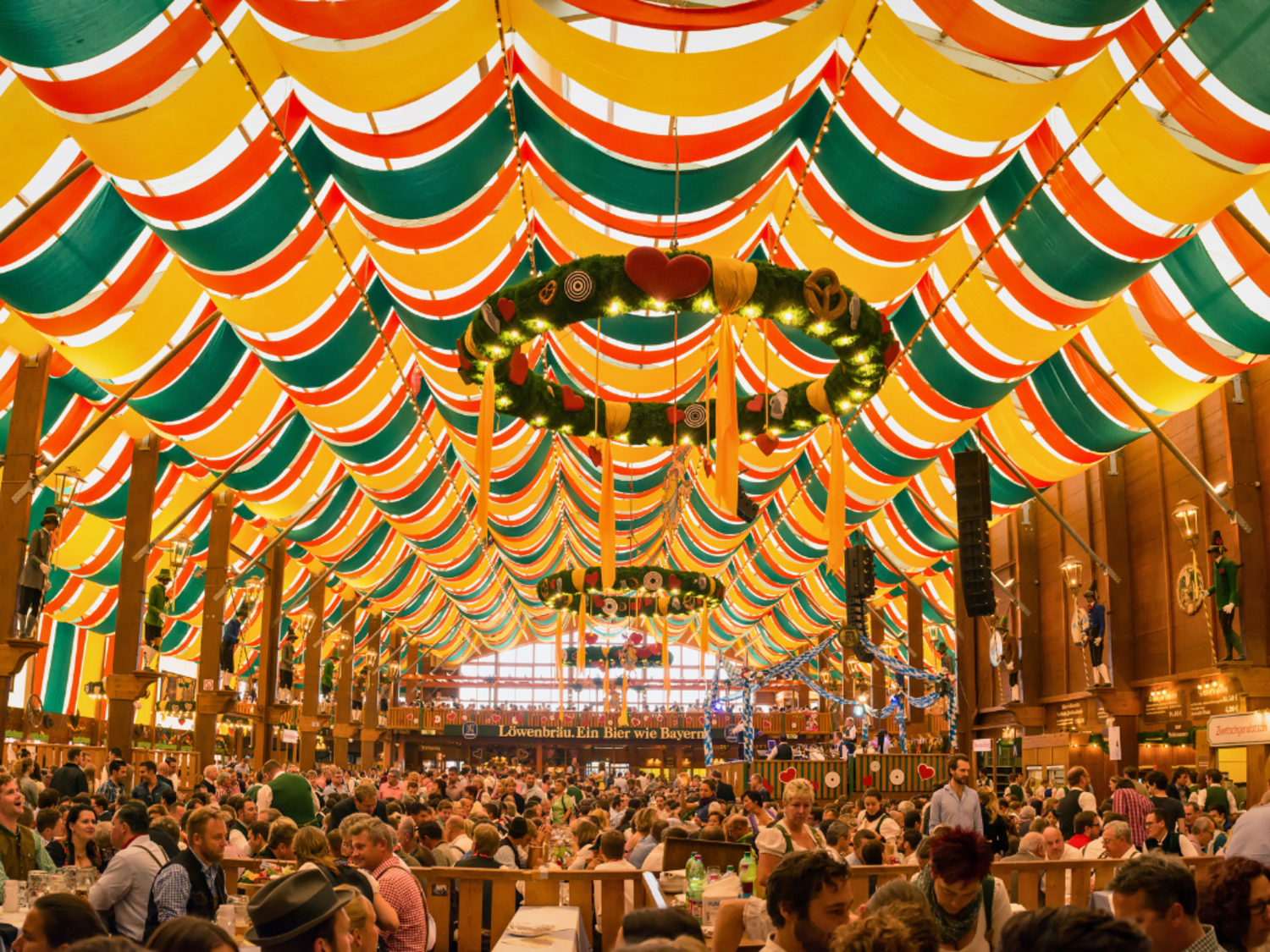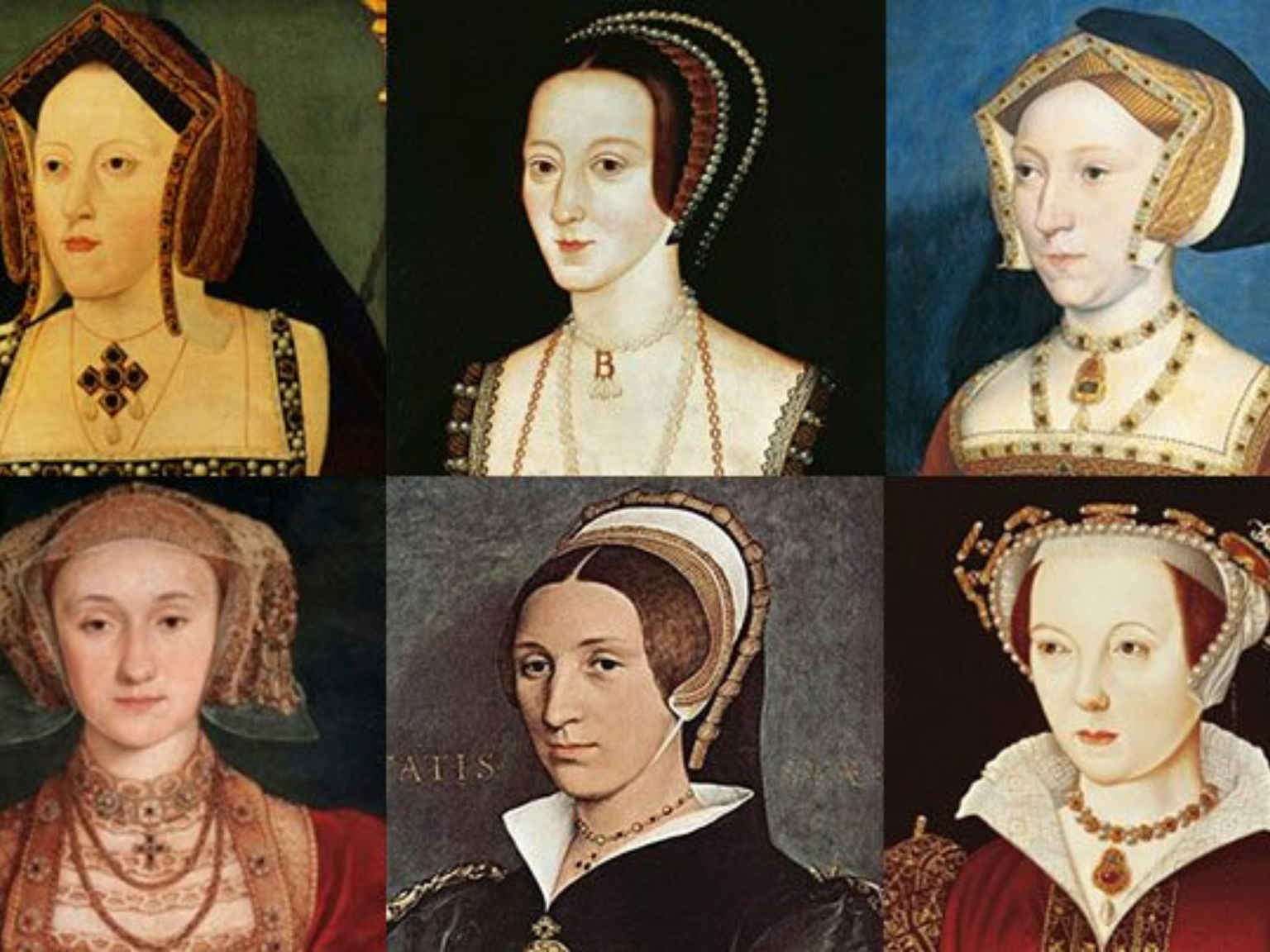Written by John Owen
Read Time: 8 minutes
Oktoberfest. Each year millions of people from all over the world descend on the Bavarian capital in search of an opportunity to wear Lederhosen, ride roller coasters and of course drink beer (which makes both of the former rather more difficult).
This is not some charming village fete - a first-time visitor to Oktoberfest is usually somewhat overwhelmed by the sheer scale of the thing. While it has changed a lot, in a sense ‘twas ever thus–or at least as far back as 1810.
Oktoberfest Origins
The first “Oktoberfest” took place on 12 October 1810, when Crown Prince Ludwig of Bavaria (later King Ludwig I) married Princess Therese of SaxonyHildburghausen. To celebrate the royal wedding, he invited the entirety of the city of Munich to join in five days of festivities, which included abundant food and drink, live music, parades, and a grand horse race on the fields just outside the city gates. These fields were later named Theresienwiese, or "Theresa’s Meadow," in honor of the princess. The celebration was such a success that it was decided to make it an annual event, giving birth to what we now know as Oktoberfest.
 A prost at the Oktoberfest Parade
A prost at the Oktoberfest Parade
As Munich grew, so did the festival. In the early years, the proprietors and event organizers would make their way to the “Wiesn” (as locals call them) for the starting ceremonies, a tradition still reflected today in the grand parade of tent proprietors on the first Saturday of the festival. By the late 19th century, beer tents and carousels became regular features of Oktoberfest, enhancing the festive atmosphere.
Oktoberfest Today
Today, there are fourteen larger tents, many of which are run by local Munich breweries. The largest of these can hold up to around 9,000 people spread across their inside and outside areas. Between these tents, a huge fairground stretches out across the Wiesen. There are traditional fairground stalls, huge roller coasters, dodgems, smaller tents and plenty of places to pick up sweets and snacks.
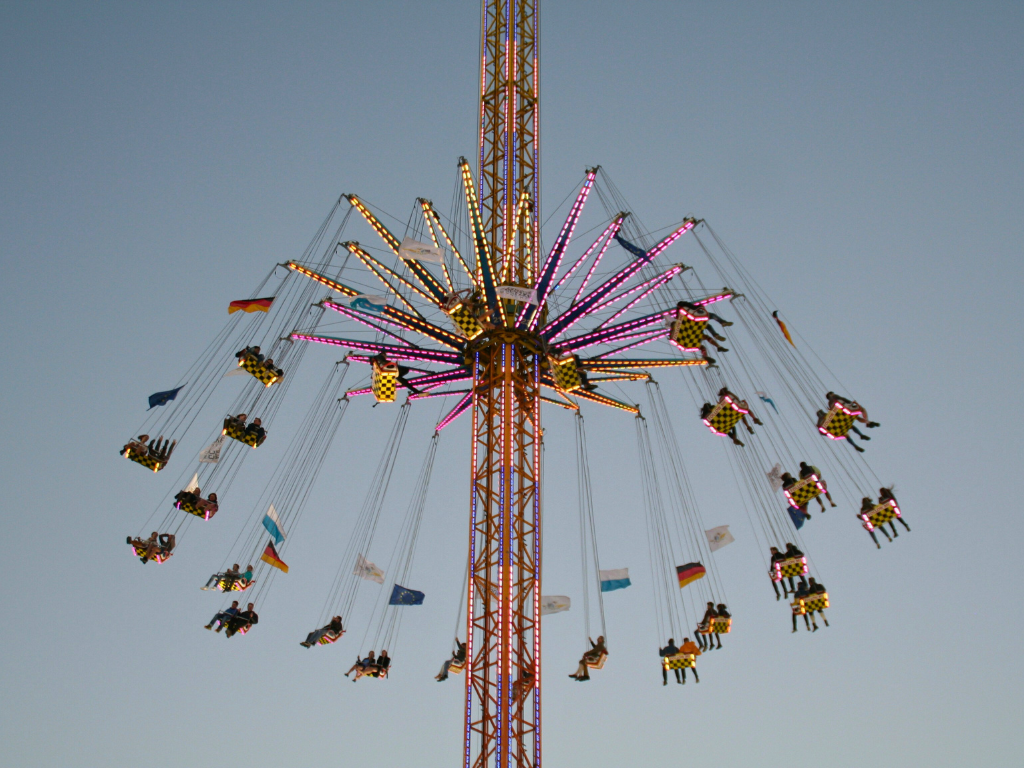 One of the many rides attendees can enjoy during Oktoberfest
One of the many rides attendees can enjoy during Oktoberfest
In each tent, waiters wearing the traditional Bavarian dress of Lederhosen for men and Dirndls for women glide around carrying enormous trays of traditional south German food and barely conceivable quantities of beer. The most classic dish at the festival is a “Brathendl” or roast chicken, generally served as a half with potato salad; over 1,000,000 portions are served a year. It is also not at all unusual to see a waiter carrying around 10 “Mass” (litres) of beer at once. (By the way, the word is “Mass” pronounced like Mahss. We never say "stein.") The glasses are chunky, each weighing around 1.3 kg before any beer is even added, so the waiters train extensively to be able to lug the weight around. Oompah bands play music to which the crowds often sing along.
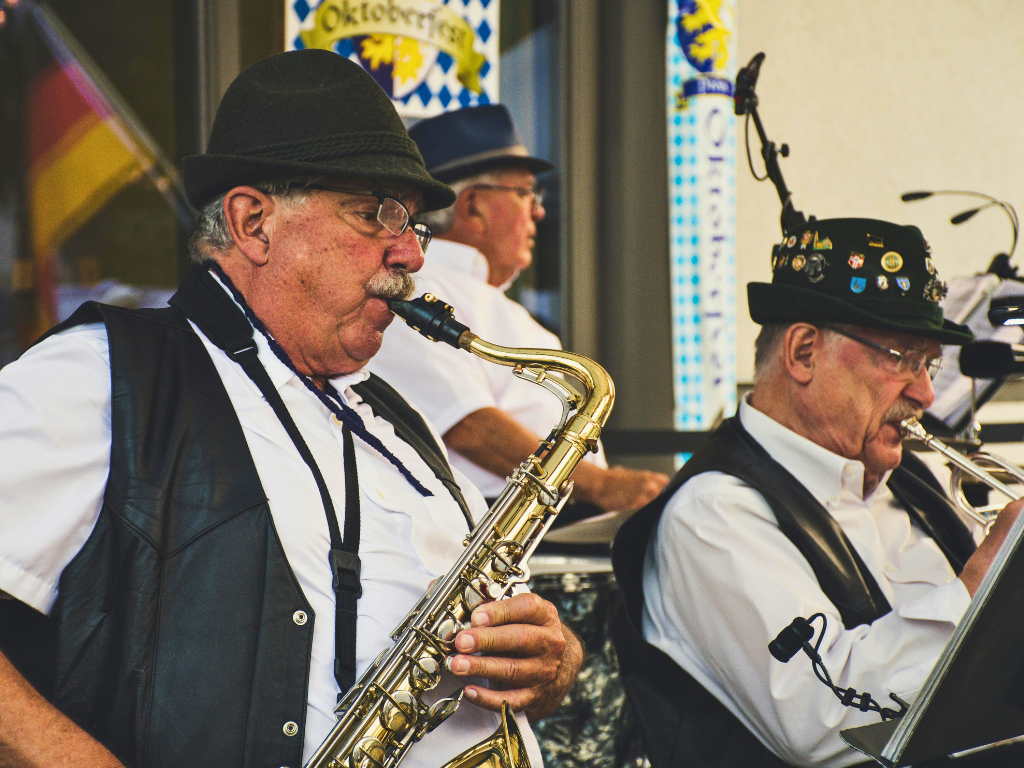 An Oompah band plays traditional Bavarian songs
An Oompah band plays traditional Bavarian songs
At least once an hour they play “ein Prosit” (a toast) while best friends and strangers–often by the end of the day the latter have become the former–crash their weighty glasses together. (I am still in contact with a guy who happened to be sitting next to me and my friends the first time I went to Oktoberfest.) The song translates as “a toast to cosiness.” Oktoberfest is not in itself particularly cosy, but it gives some sense of the homely thinking behind this huge festival.
The History Behind the Hops
Every local brewery produces a special beer for the festival. It is known either as Oktoberfestbier or Märzen and the latter name gives you some sense of the brewing process. Historically beer was brewed more in winter than summer as the hot weather made it likely that it would go bad during the process. March (or “März” in German) was therefore the last month that beer could be reliably brewed. Therefore in order to sate this huge festival, large quantities of beer had to make it to the autumn. It was stored in large barrels–the German for storeroom is “Lager” which gives you a sense of why so much beer is called “lager” in English.
 Prost!
Prost!
To make it through the summer months, this type of beer is slightly stronger (sitting around 5.5-6%) than lots of typical modern session-type beers. A few Mass and you will definitely feel it. But it also has a delicious flavour with the malt shining through. In general Bavarian beer is sweeter and maltier than northern German pils style beer.
A First-Timer’s Guide to Oktoberfest
It’s brash, it’s big and it can be overwhelming, but it is a sight to behold. A first-time visitor needs to be aware of a few things:
- Oktoberfest happens on the Wiesen. The rest of the city can feel bizarrely separate from it all, even if it is often full of tourists taking a break from the revelry. The Wiesen are also not as bucolic as the name suggests. The “fields” are now essentially a huge tarmacked area which solely exists for this annual festival
- Getting into the big tents is not easy. Large areas of the tents are reserved. Although free, these reservations very difficult to get for visitors. If you don’t have one, you will be able to get in but be aware, you may have to get there early. Most tents have two sittings across the day: one morning, one evening. It is also a good idea to go to tents whose beer is less well known outside Germany (i.e. Hacker, Pschorr or Spaten and not Paulaner). If they are full you can normally wait in line for people to leave during a sitting.
- It gets rowdy. The short walk between the city’s main station and the Wiesen is in the evenings littered with the detritus of drunk people and a fair few of them as well. Even at the festival, it can be loud and intimidating. This is not a reason not to come, but you should be aware of the festival’s environment so you can plan accordingly.
First-time visitors can use this resource to plan and stay abreast of event updates. My top tip for anyone coming to see this spectacular event is to allow one day for the festival and use the rest of your time to explore Munich and some of the rest of Bavaria. The city has some of the best art galleries in the world with the three Pinakotheks and–my personal favourite–the Lenbachhaus. Strolling in the Englischer Garten is also a lovely way to spend an autumn day and you can reward yourself with a beer in one of the two large biergartens in the park at the end.
 The Alte Pinakothek, one of the oldest galleries in the world, which is located in the Kunstareal area in Munich, Germany.
The Alte Pinakothek, one of the oldest galleries in the world, which is located in the Kunstareal area in Munich, Germany.
Exploring Bavarian Beer Beyond Munich
Bamberg is in northern Bavaria (Franconia, technically). It is a stunning medieval city just a short distance from Munich and is worth spending a night or two in this region. Bamberg is famous for its religious history, its stunning position on the Danube and its beer. Franconian beer is darker than Munich beer and is, in fact, a more traditional brewing type–lighter malts only came in much later in history. In addition, Bamberg produces a famous smoked beer (which can now be found in hipster bars across the world). It is something of an acquired taste but well worth trying. It’s a great accompaniment to grilled meat.
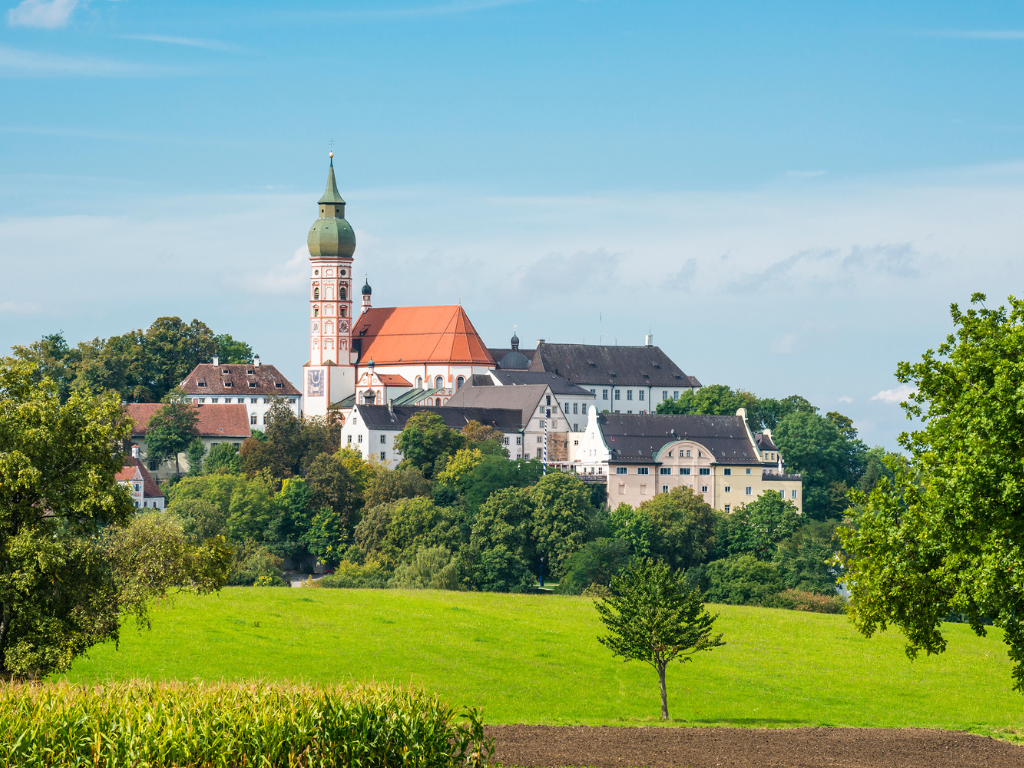 The monastery in Andechs
The monastery in Andechs
In addition, there is of course the restaurant and… the beer. The monastery has a brewery which produces (to my taste) the most delicious Bavarian beers of all. My personal favourite is the darker brew, but their lighter Helles is a more refreshing drink after a decent walk. After lunch you can get the bus back down and spend some time in Herrsching which sits on one of the huge lakes near Munich, or take a slightly longer trip to Starnberger See, which is the most impressive of all the local lakes.
Prost to Oktoberfest
Oktoberfest is more than just a beer festival; it’s a celebration of Bavarian culture, history, and community. It is important to remember that it is a proudly Bavarian tradition. Come to Berlin during the weeks of Oktoberfest and no one (except in a few Bavarian bars) will be celebrating. Indeed, Berliners and Müncheners hold each other in mostly light-hearted contempt; my Berliner wife and I have an annual discussion about how I can get my Bavarian beer fix with her having to spend as little time as possible in the southern German state.
From its royal origins to its modern day grandeur, Oktoberfest continues to captivate and charm millions of visitors from around the world. You will likely be drawn in by the beer, but you will also eat great food and feel part of something that still plays a major role in lots of Münchener’s year. With every Mass, you buy into a centuries old tradition of a city celebrating its proud identity.
A Prost to Oktoberfest, a timeless celebration of Bavarian heritage!
John studied History and German at the University of Oxford, eventually specializing in German-Jewish history and the history of the Third Reich. He has been coming to Berlin since he was a teenager and moved to the city permanently in adulthood. The tangibility of history, especially that of the twentieth century, never ceases to thrill him in Berlin.
